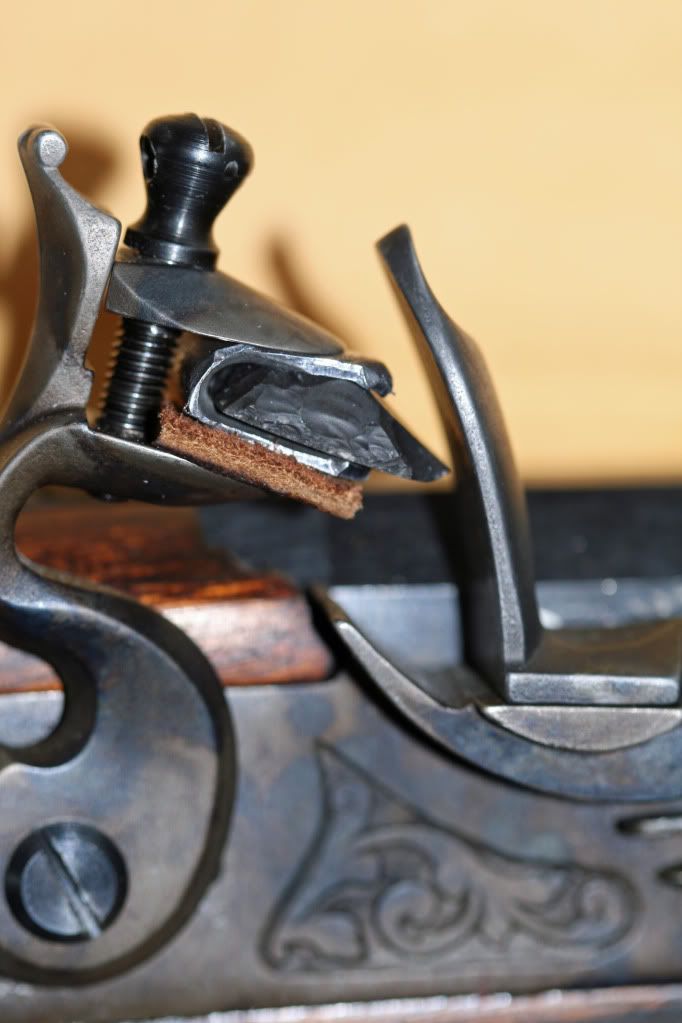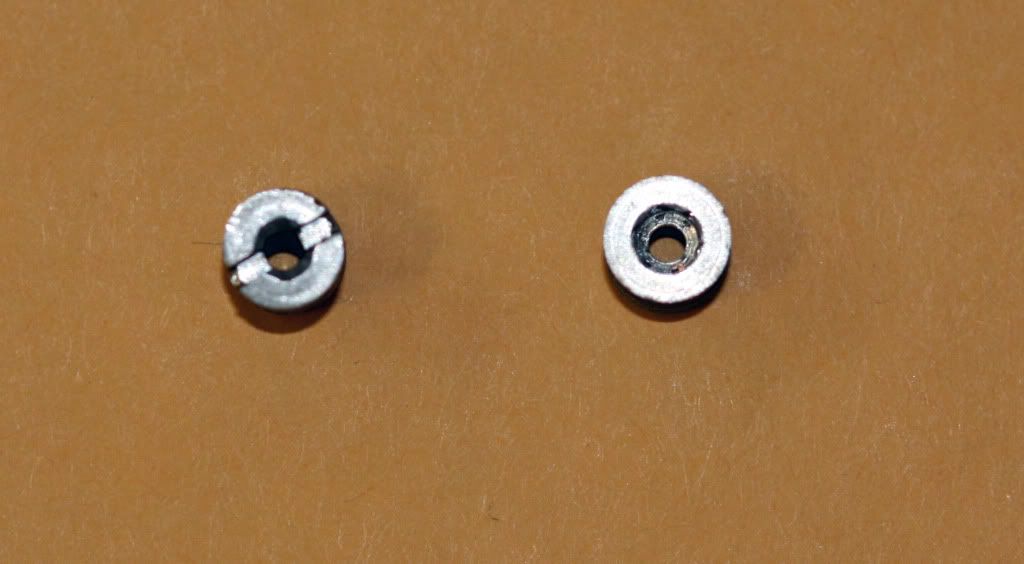Mark...
When I charge the pan (put FFFFg powder in the frizzen pan), I put the priming powder in the pan, then lean the rifle SLIGHTLY to the LEFT and "bump" the rifle with my left hand hitting against the left side of the rifle opposite the flash-hole 4 or 5 times to insure that some of the 4Fg powder goes into and through the flash-hole and into the flash-channel near the main powder charge of FFFg.
Then, since much of the priming powder is stacked up against the flash-hole, to re-distribute the powder, clear the flash-hole and level the FFFFg priming powder in the pan, I lean the rifle slightly to the RIGHT, and bump the rifle near the pan with my RIGHT hand a few times... enough to re-distribute the prming powder back to being level in the pan WITHOUT removing the powder back out the flash-hole or removing the priming powder out of the flash-channel.
I'd recommend you use FFFg rather than FFg because you'll get a bit more muzzle velocity with a safe load of FFFg than you would with a load of FFg... and it's claimed that the FFFg cleans up easier and better than FFg, but that is not by my knowledge, it's just what I'm heard other BP shooters say.
Of course, prior to priming the pan, I always insert a bent-open paper clip into the flash-hole to insure flash-hole is "clear" and will allow the "flash-of-fire" from the igniting priming powder to go through the flash-hole, into the flash-channel and ignite the small amount of priming powder you've gotten in the flash-channel by "bumping" the rifle and having a little of the priming powder flow through the flash-hole and into the flash-channel.
This tiny amount of burning priming powder also aids in giving faster ignition to the main powder charge laying close by in the rifle.
If you do the above with reasonable care, your flinter lock should ignite the main powder charge in haste thus firing your rifle's main powder change in very close to the same time-frame as a percussion cap rifle without any hesitation or hang-fires.
Incidentally, I bought a set of diamond-impregnated files at Harbor Freight for about $10 and use those files to sharpen my flints while they're still in the cock (hammer). This works out just fine and can quickly be done at the shooting range with little time spent doing it since you can leave the flint in the cock while you're sharpening it's edge.
In addition, I use lead to hold my flints... and once it is re-tightened, it rarely works loose, but tends to "hold" the flint in position somewhat better than leather since the soft lead conforms better than leather to the irregular shapes and crevices on the flints.
In truth, there is no "wrong way" with using leather or lead to hold your flints securely, it's just a matter of the shooter's preference... and it's MUCH less costly to pound a lead rifle ball or two down flat with a hammer to make your own lead flint holders.
The use of the file in sharpening your flint is more precise than any other way of sharpening the flint... and it's relatively fast as well. In addition, you usually get longer life outta your flints because you are NOT knapping off useful pieces of the flint for no reason which might give you added shots if left on the flint. It has not been unusual for my flints to average well over 60-70 or more shots per flint, but then with the lead and using the files, I tend to get more "life" outta my flints than many others get from their flints.
It's usually a very good idea to use a clean rag to wipe off the face of the frizzen and the edge of the flint after a couple of shots.
Doing all these small, but important "chores" helps to make your flintlock much more likely to fire. Those fellas who don't do these "chores" are usually the ones who complain about the "reliability" of their flintlock rifles.
Another post recommended you find, befriend and get with another black powder shooter(s) who is hopefully also an experienced flintlock shooter who can mentor you and bring you up-to-speed in your use of your new flintlock rifle as well as what is the best way to clean it after shooting it.
The rifle MUST be thoroughly cleaned as soon as possible after shooting it. If you leave it to be cleaned until the next day, you'll probably find the barrel's bore is ruined. Black powder is VERY corrosive!
I hope you've now got a better idea of how to go about loading and shooting your new flint-lock now... so good luck...
AND... make "GOOD" smoke...!~!~! :thumbsup:
Strength & Honor...
Ron T.






